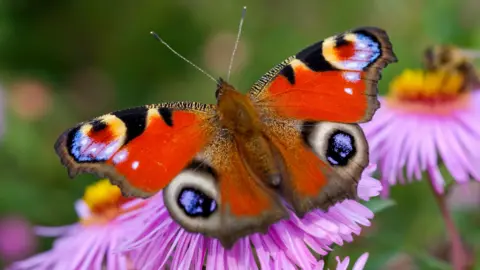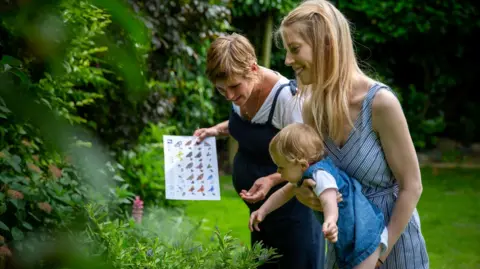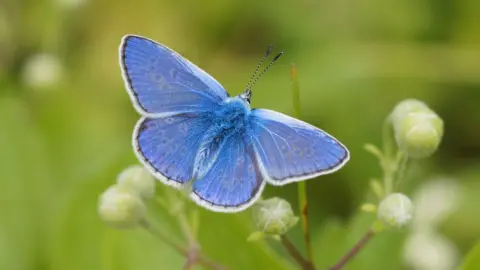'Concerning' decline in NI's butterfly numbers
 Getty Images
Getty ImagesThere has been a “marked and hugely concerning” decline in butterfly numbers in Northern Ireland, following the 2024 Big Butterfly Count.
More than 840 people took part in 1,475 counts in the annual citizen science project, recording 5,285 butterflies.
That was a fall of 13,200 - or 71% - compared to 2023.
On average, just four butterflies were seen per count, half that recorded in 2023, resulting the lowest number spotted per count in the project’s 14-year history.
 Butterfly Conservation
Butterfly Conservation'Butterfly Emergency'
The charity behind the count, Butterfly Conservation, has declared a national "Butterfly Emergency".
In Northern Ireland, the majority of species (73%) declined compared to 2023 figures.
It was the worst year in the history of the count in Northern Ireland for Small Tortoiseshell and Red Admiral, and the second worst year for Peacock, Six-spot Burnet, Small Copper, Small White and Speckled Wood.
The Ringlet and Meadow Brown were the only two species to show significant growth.
Both declined at UK level.
 Butterfly Conservation
Butterfly ConservationThe Common Blue and Green-veined White also had small increases in Northern Ireland.
Nationally, the 14-year trends show that 11 species (65%) are declining, and three species (18%) – Red Admiral, Holly Blue and Small Copper – are increasing.
'We must act now'
Butterfly Conservation is calling for action to ban neonicotinoid pesticides that can kill butterflies which consume nectar from contaminated plants.
“Butterflies are a key indicator species,” said the charity's head of science, Dr Richard Fox.
“When they are in trouble we know that the wider environment is in trouble too.
“Nature is sounding the alarm call. We must act now if we are to turn the tide on these rapid declines and protect species for future generations.”
In an open letter to Steve Reed, the environment, food and rural affairs secretary, the charity called for the government to “act now for nature”.
A major report last year found many butterfly species in Northern Ireland were in serious decline.
